USSEC makes inroads with the Southeast Asian country’s freshwater fish industry
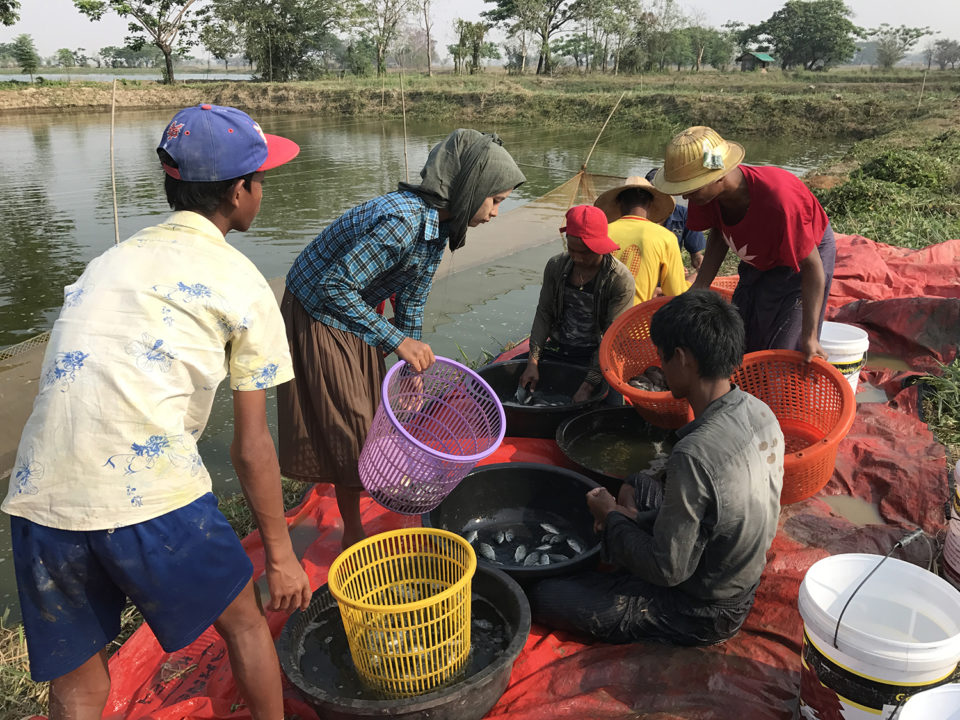
Freshwater fish make up the bulk (95 percent) of Myanmar’s reported aquaculture production, and until recently, fish farmers have relied on the indigenous carp, rohu, for around 70 percent of their output. Mrigal and catla carps make up a further 10 percent, while pangasius, tilapia, grass carp, common and silver carps, bighead carp, snakehead, catfish, sea bass and grouper are all cultured in smaller quantities.
Most fish farms are located within 50 kilometres of the capital Yangon, and are built on rice paddy lands. Curiously, such practices are against the law, yet many local farmers manage to circumvent the regulations. In other areas such as Mon State, situated on the western coast of the country, where strict enforcement of the regulations is upheld, the development of a smallholder fish farm sector has been stifled.
However, the fortunes of Myanmar fish farmers may be about to change, as a result of input from the U.S. Soybean Export Council (USSEC). The organization has started to promote tilapia production in rural areas through farm demonstrations and farmer education efforts. At the end of 2015 they kicked off the project with a farmer/industry leader delegation to view Vietnamese farms, followed by trips to the Philippines in 2016, and Indonesia this year. In August, USSEC is organizing tilapia grow-out training, along with a market seminar that will bring local and foreign seafood buyers to meet local processors and farmers.
Earlier this year, USSEC sponsored an intensive course on tilapia hatchery technology for Myanmar hatchery managers. It also ran demonstration units for intensive monoculture of tilapia in Naung Thar village, in the Bago Township. These used half-acre and 1-acre ponds, stocked with 10,000 fingerlings per acre. The fish were given a floating formulated feed, and records of water quality, feed use and growth rates were diligently kept.
“The use of formulated feed is a significant move away from the ‘trashfish’ feed formerly used on fish farms and is just one of the ways in which USSEC is able to help fish farmers to development their industry, said May Myat Noe Lwin, USSEC’s Myanmar technical manager for aquaculture.
“These demonstration areas have proved to be highly productive, with excellent survival rates, good feed conversion ratios, fast growth and strong profits.”
USAID is also weighing in through its sustainable seafood industry development effort, which is providing laboratory facilities for water quality and fish disease, plus a donation of tilapia fry and brood stock. The Department of Fisheries Myanmar and the Myanmar Fisheries Federation are also very supportive of all the projects.
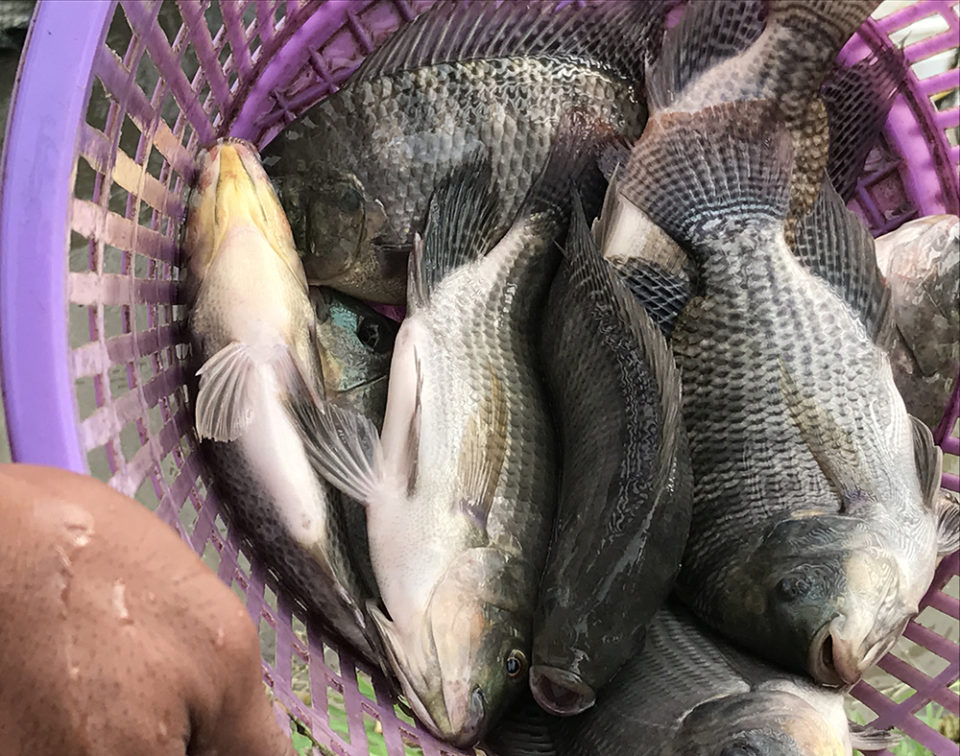
Species switch leads to further development
In August 2016, the U.S. Department of Agriculture (USDA’s) Foreign Agricultural Service (FAS) opened a permanent office at the U.S. embassy in Yangon. This opened the way for USSEC’s aquaculture program to support increased sales of U.S. soybeans and soybean meal to Myanmar for both its livestock and aquaculture industries.
Tilapia farming is not new to Myanmar, but successful production is. Mozambique tilapia (Oreochromis mossambicus), formerly known as Java tilapia, was introduced to Burma in the 1950s, but the fish did not become popular with consumers and production became sporadic.
In the late 1990s, improved strains of the larger Nile tilapia (O. niloticus) were introduced, and found to be faster-growing. By 2004 several hatcheries and farms were established in the Yangon and Ayeyarwady regions, based on a model developed by the Asian Institute of Technology.
Producers were hopeful that the industry would develop a strong export market, but this was not to be the case. Instead, U.S. and EU sanctions, together with a 10 percent export tax imposed by the Myanmar government, resulted in tilapia farming failing yet again to become a commercial proposition.
However, domestic market acceptance grew, and an increasing number of traditional carp farmers began to stock tilapia, either alone or in polyculture. Before long, tilapia barbecue had become one of the most popular fish dishes in restaurants and pubs, and at roadside stalls.
When Cyclone Nargis struck Myanmar in 2008 and flooded virtually the entire area in which tilapia were farmed, the industry was badly affected. Many fish escaped, but became established as a wild population in virtually all the water bodies of the southern states.
According to Noe Lwin, over the next couple of years, in an effort to reestablish tilapia farming, new stocks were distributed to most of the fish farming locations in Myanmar.
“This took place in a haphazard manner with little if any selection of broodstock, with the result that genetic bottlenecks have become commonplace, and stunted and inbred populations have been reported from all locations,” she said.
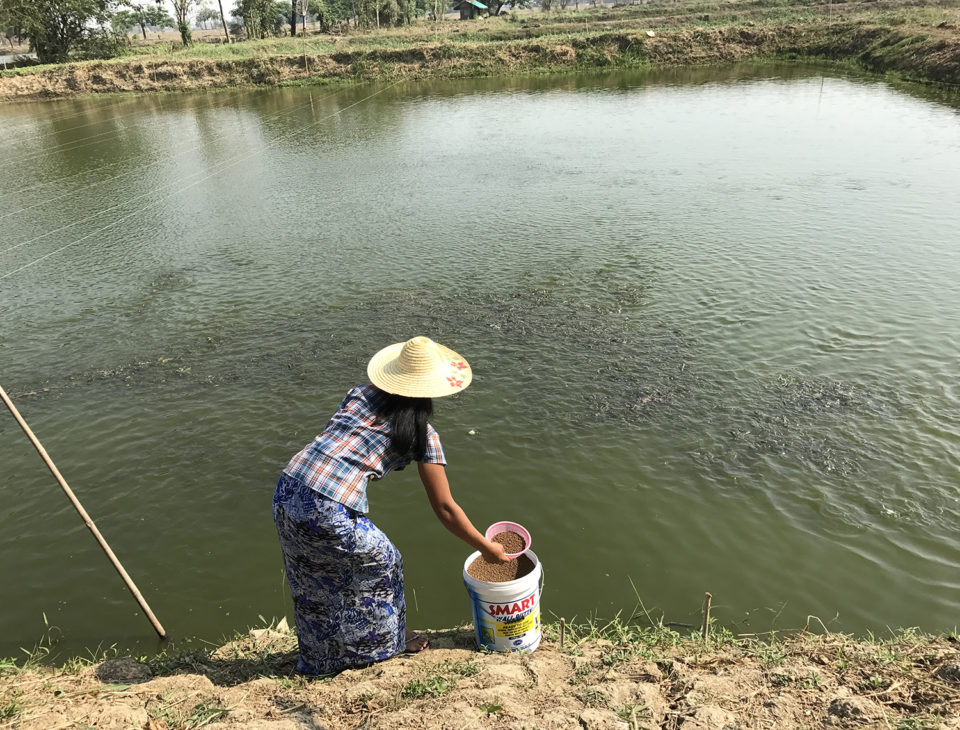
Cage culture under consideration
Today, the majority of tilapia are produced in polyculture ponds where they are reared in conjunction with Indian and Chinese carps. These ponds are also likely to have pangasius, pacu and a mix of native cyprinids.
Polyculture of tilapia with shrimp has not yet been practiced, as the shrimp farms are mostly low-density, trap-and-hold ponds, which are not suitable for fish.
“Most of the tilapia ponds are multi-acre in size and are managed more as a fishery than a crop. To harvest the largest and fastest-growing fish, large mesh seine nets are pulled through the water,” said Noe Lwin.
Carps, catfish and pacu are stocked annually as fry and fingerlings, but tilapia are allowed to spawn freely. However, by selectively harvesting only the fastest-growing fish means that over time, only slower-growing and smaller fish remain as broodstock.
“As the large ponds are rarely drained and completely harvested out, this phenomenon is common in most of the large pond farms,” said Noe Lwin.
To improve this situation, the government is thinking about allowing cage culture of freshwater fishes in reservoirs and lakes, but as of summer 2017, this practice is still not allowed in public waters, so there is little if any cage-reared tilapia.
The government is, however, keen to support increased tilapia production and has worked with WorldFish to introduce Genetically Improved Farmed Tilapia (GIFT). GIFT broodstock have been imported and quarantined in a breeding center, and the aim is for the fish to be distributed first to government hatcheries and then to private sector hatcheries and farms.
Private growers have also imported tilapia fry from Thailand in recent years, but the growing incidence of tilapia lake virus (TiLV) has made them wary of making further imports until the problem has been resolved or effective vaccinations developed. TiLV was first found in wild Galilee tilapia in Lake Kinneret (Sea of Galilee) in Israel in 2009. The virus has since been reported around the globe and whilst the epidemiology is still being determined, transfer of fry is thought likely to be one path of transmission.
The current tilapia harvest is around 45,000 metric tons per year, the vast majority of which is sold on the domestic market. The population of Myanmar has one of the highest annual per capita consumption rates in the world, at 56 kilograms per person.
“We are hopeful that the USSEC education program, together with GIFT tilapia, will see production improve and increase over the next few years. and I look forward to helping fish farmers in this task,” said Noe Lwin. “When this happens, I strongly believe that we can develop a thriving export market for Myanmar tilapia.”
Author
-
Nicki Holmyard
Nicki Holmyard has written about the seafood industry for longer than she cares to remember! A committed pescetarian, she is also a partner in the UK’s first fully offshore rope-grown mussel farm.
Tagged With
Related Posts
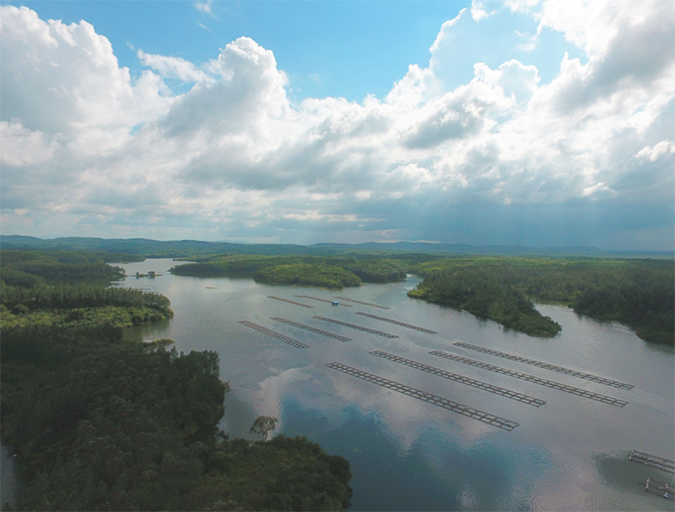
Intelligence
What will it take to make tilapia great again?
Once a darling of the sustainable seafood crowd for its vegetarian diet and potential to feed the world’s growing population, mild-mannered tilapia now has an image problem that may be causing a dip in consumption levels.
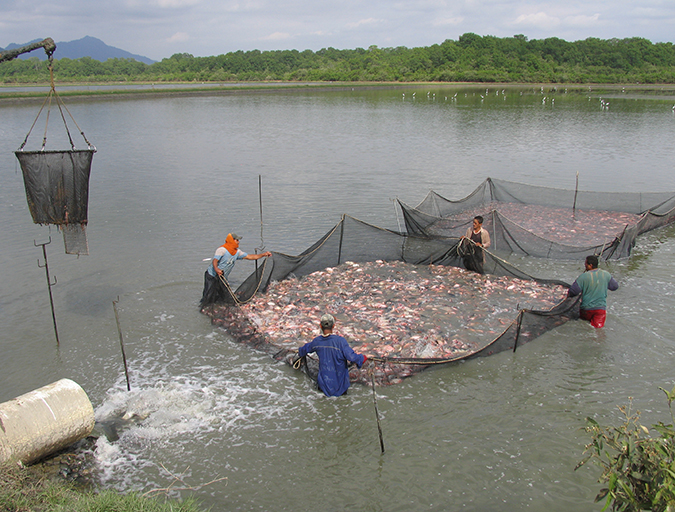
Responsibility
Addressing safety in Latin America’s tilapia supply chain
Over the last decade, the experience gained by many tilapia farmers combined with proficient programs implemented by local governments have significantly improved tilapia production in various Latin American countries like Colombia, Mexico, Ecuador and other important tilapia producers in the region.
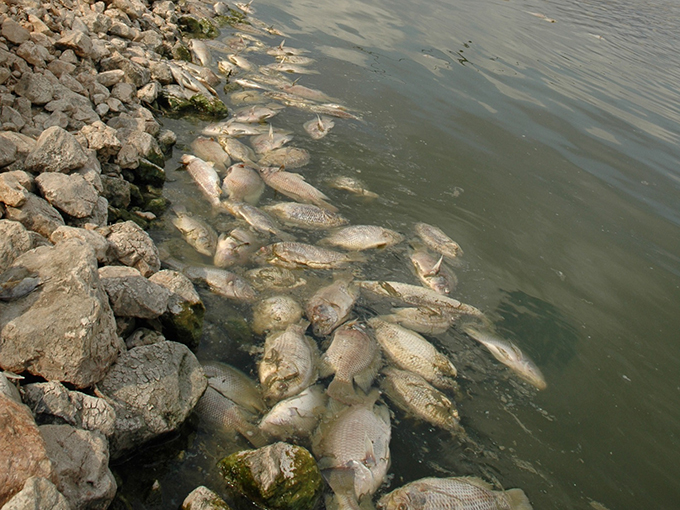
Health & Welfare
Sizing up TiLV and its potential impact on tilapia production
An international research effort has commenced to find a solution for Tilapia Lake Virus (TiLV), a contagion causing high rates of mortality in farmed and wild tilapia stocks in Israel, Colombia, Ecuador, Egypt and Thailand.
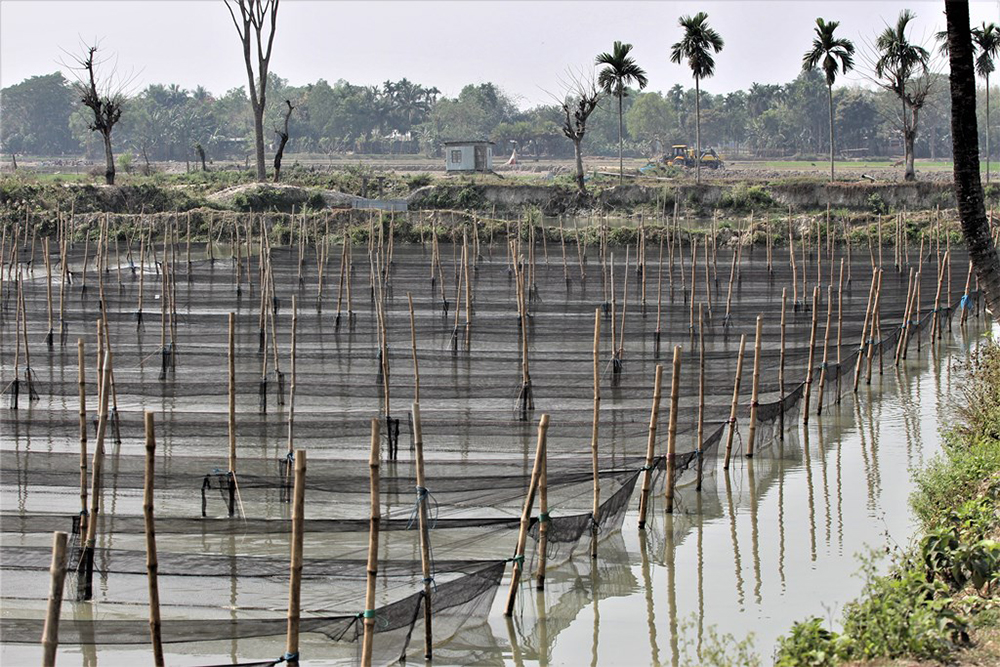
Intelligence
Bangladesh’s tilapia aquaculture industry shows resilience
Tilapia aquaculture in Bangladesh has developed significantly since 1999, based on the Genetically Improved Farmed Tilapia (GIFT) strain of Nile tilapia (Oreochromis niloticus) introduced from Malaysia and on the significant genetic improvement research work by the Bangladesh Fisheries Research Institute (BFRI).


